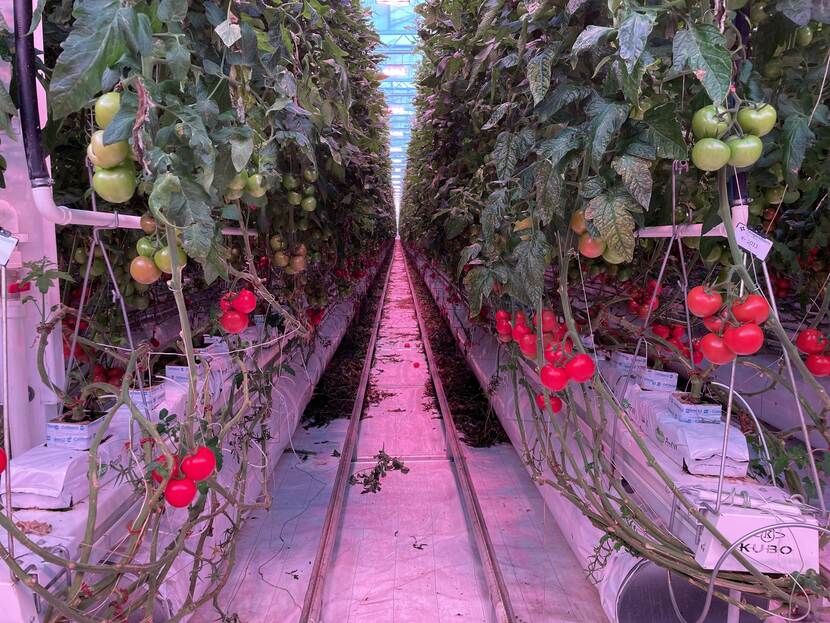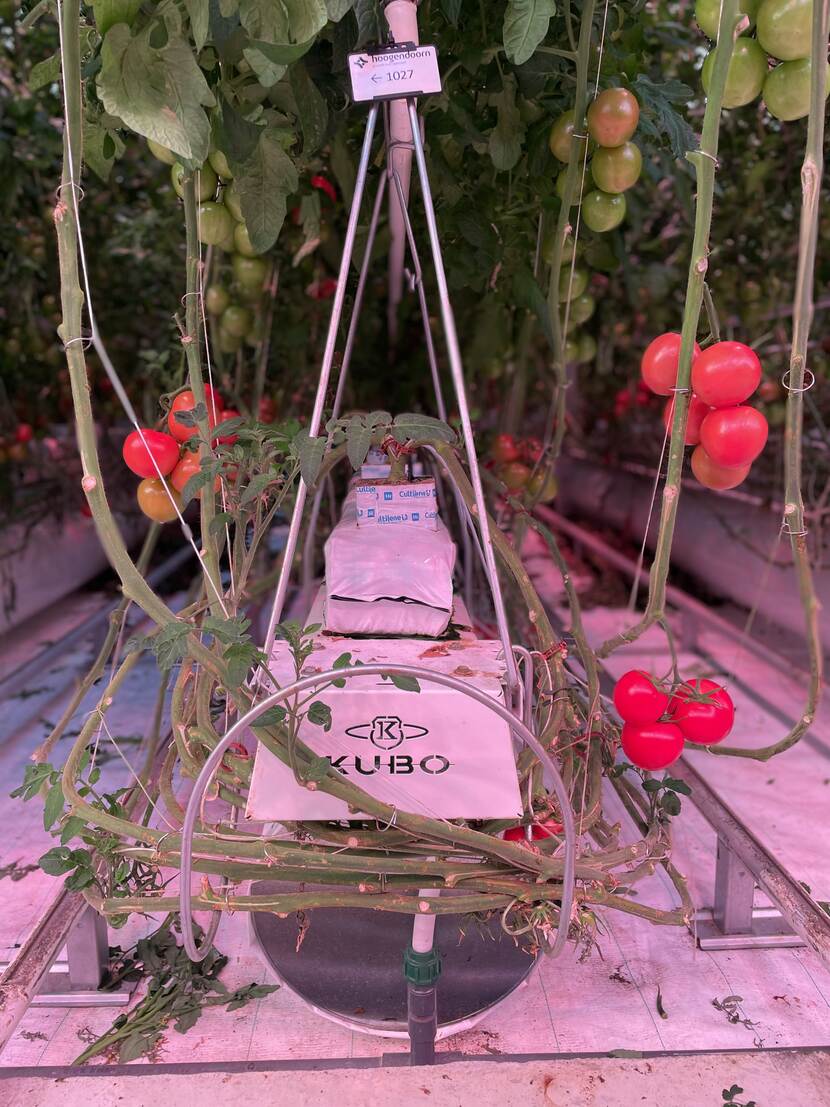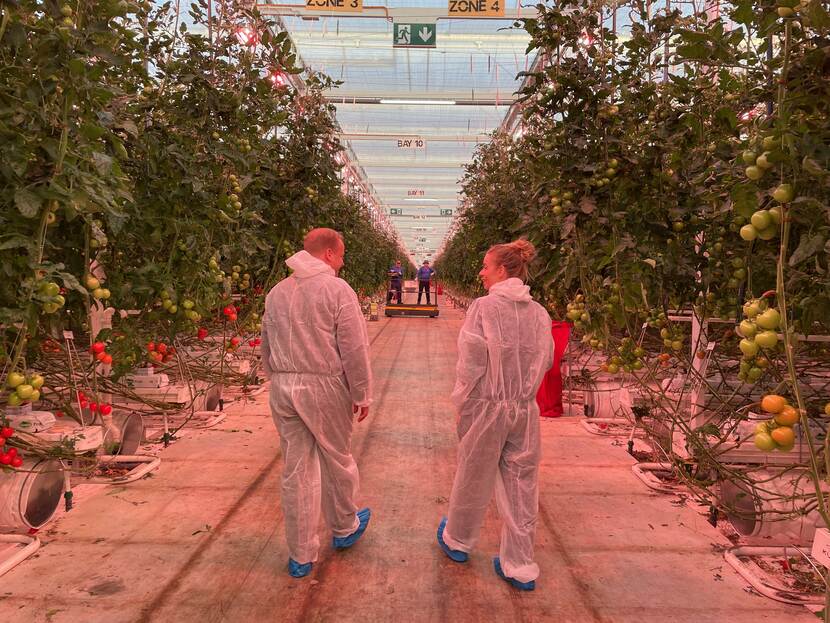From carton to tomatoes: a Dutch greenhouse Journey in Sweden
In Frövi, a small town in central Sweden, sits a world leading paper and carton production facility. Right next door is a tomato greenhouse, as large as 40 football fields, producing locally grown tomatoes från Sverige. Between them lies an innovative partnership: through a thick pipeline, warm water from the papermill heats the greenhouse, which returns the water cooled, creating a fully closed and sustainable cycle. Dutch operator FoodVentures, who runs the greenhouse, believes that local, sustainable production—circular, efficient, and plant-based—can feed global cities.

The Netherlands Agricultural Network team for Scandinavia spoke with Lennart, the temporary site manager of Frövi Greenery, about what brought this project to Sweden, how it is going, and lessons learned along the way.
Why Sweden?
“Greenhouse farming is a smart solution to meet food supply and demand challenges. Tomatoes, for example, are healthy and affordable, while conventional farming faces growing limitations on Earth. Climate change is making countries like Sweden more favourable for agriculture. A report from the European Environment Agency even showed that land value in Sweden will rise with warming, while countries in southern Europe will struggle more with water shortages. To keep production sustainable, we need to shift to the north.”
Why Frövi?
“Frövi has the ideal conditions,” he continues. “We can use industrial heat from the papermill, which is energy efficient. We always look for the lowest environmental footprint, whether that’s geothermal, flare gass, biomass, or residual heat. When the factory was closed for maintenance, we switched to biofuels to keep the greenhouse heated."
"Frövi also offers a lot of land and water. We maximize efficiency with water and fertilizer by using advanced techniques like precision irrigation, rainwater harvesting, natural pollination, and biological pest control. Still, greenhouses need a lot of space, and we’ve chosen to build far from animal farms to keep plants healthy and disease-free."
"Plus, the region offers a strong market opportunity, especially in winter when most local growers stop due to high costs for heating. We can fill this gap, providing fresh, locally-grown tomatoes year-round.”

How is the tomato production going?
“It’s going great! The first couple of months the plants were preparing to grow fruits and now each plant produces one truss of tomatoes and grows about 25 cm every week. Our tomatoes are more expensive than imported ones, but consumers are willing to pay for Swedish-grown produce. This winter also looks promising, with limited competition. We expect to produce 8,000 tonnes of tomatoes per year, which would cover 10% of Sweden’s total demand.”
As we walked around the greenhouse, we saw both men and women moving up and down along rows of tomatoes, with self-driving carts transporting trays of freshly picked produce. Grower Willem helped us take a picture—he worked in Dutch greenhouses for years but likes the adventure of living abroad and applying Dutch farming techniques to contribute to food security.

How have Swedes responded?
“People have been very positive. Consumers like that the tomatoes are locally grown—they see them as fresh and safe. Many people from the area have even asked if they can visit the greenhouse! Due to hygiene regulations, we can’t allow this right now, but we’re considering an open day at the end of the season.”
"Frövi Greenery has created over 100 jobs, and in partnership with the municipality, region, and a recruitment agency, we’re helping people facing barriers to employment find work. We also have employees from Ukraine working here."
"We work closely with local partners. Both the investor and developer are Swedish, and ICA, our largest client, purchases 80% of our tomatoes. We’ve also received great support from Odlarlaget, a Swedish growers' cooperative.”
What advice would you give to Dutch companies coming to Sweden?
“Sweden is a big country with a small population, and everyone seems to know each other. Building a good relationship with local government and the community is crucial. In this project, we got involved a bit late. FoodVentures has a lot of expertise, and it would have been helpful to share it earlier. For example, we could have recommended a buffer tank for warm water from the factory. In future projects, we’ll focus on establishing these connections sooner, maybe using networks like the embassy."
"Sweden is part of the EU, so much of the legislation is similar, but there are local differences to consider. The embassy helped us on how to obtain a work permit for one of our colleagues."
"One last thing: don’t underestimate cultural differences. Managing expectations is key. Swedish partners are generally more reserved initially, but once you build trust, the relationship is solid. While in the Netherlands we might push forward with more urgency, it can sometimes feel like the Swedes lack the same drive to make a project succeed. But that’s not the case—they’re just more focused on steady, long-term progress. And they value a good work-life balance!”

What’s next for FoodVentures?
“Expansion is already underway, with the investor building additional facilities. FoodVentures will step back from day-to-day operations, taking on an advisory role to help build local expertise and empower local farmers."
"This project is just the beginning—the first of many. We’re already discussing further opportunities with the same investors and are open to new possibilities. There’s a lot of interest in food production in Sweden, so it will remain one of our focus areas.”
Before leaving Frövi, we made a quick stop at the local supermarket, where a sign proudly displayed, “Här har vi närodlade tomater från Sverige”—"Here we have locally grown tomatoes from Sweden."
This project is an example of strong cross-border collaboration, combining Dutch innovation and Swedish sustainability efforts to contribute to European food security.
